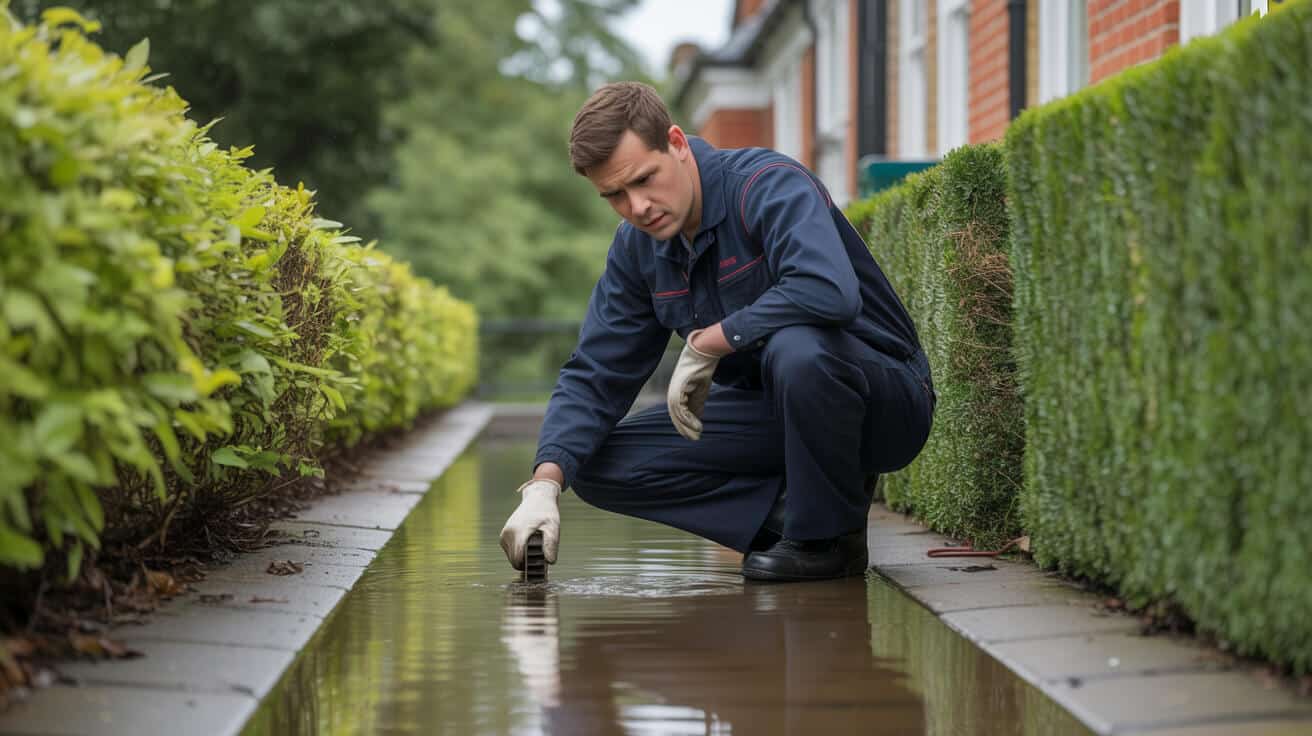 Warranty VS Insurance Protecting Your New Build Heating System
Warranty VS Insurance Protecting Your New Build Heating System
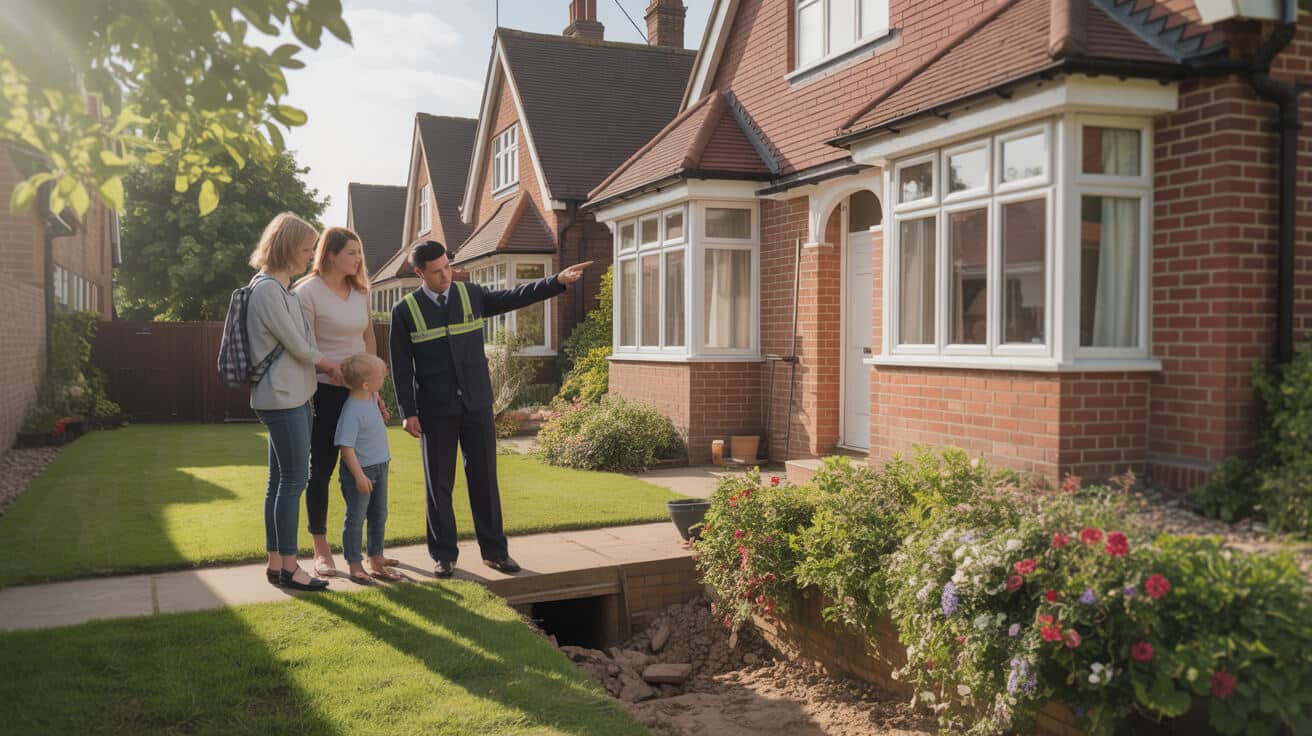
What’s the Real Difference Between a Heating System Warranty and Insurance on a New Build?
The heating system in your new build isn’t just a luxury—it’s the backbone of daily comfort, safeguarding you and yours through frozen dawns and peak winter stress. But the moment a system fault throws your routine off course, protection comes down to the small print: does your warranty cover it, or does the insurer pass the buck? For home owners, landlords, and every stakeholder managing modern property risk, the real gap lies between legal guarantees and lived experience.
Warranty feels like peace-of-mind—until the repair bill lands on your doormat.
Warranties for new builds—think NHBC Buildmark or similar schemes—are primarily tied to construction and installation standards. Builder obligations loom largest during the first two years, especially around heating fit-out or early system stumbles. Yet, as months pass, responsibility fragments: the developer’s warranty narrows, the manufacturer’s terms kick in, and home insurance sits in the background as the last-ditch fallback—but only for certain types of claim.
Each layer asks something different from you:
- Builder’s Defect Period: Temporary and tightly focused on faults from initial work.
- Manufacturer’s Warranty: Product-centric, often conditional on perfect maintenance.
- Home Insurance: Covers sudden, accidental damage (like major leakage), usually as last resort after other coverages decline.
The real pain? Every protection assumes flawless paperwork and adherence to servicing rituals. Miss a boiler service, lose your logbook, or attempt a quick DIY bodge on a sticky valve, and the dominos can topple—leaving you to foot the entire bill. Property managers and landlords face even stricter scrutiny, with compliance checks often tied to letting legislation (Gas Safe, G3 certification, WRAS, and more).
Ownership isn’t just about holding the keys; it’s about proving you’ve played your part every step of the way.
- *A warranty defends against construction fault, not user error or wear and tear.*
- *Insurance expects all other coverages to be tried before stepping in.*
- *The manufacturer only supports you if you stick to their servicing and instal requirements to the letter.*
The bottom line? Your heating system must be treated like an asset under constant audit. Success isn’t just ticking a box after installation—it’s building a record of care and compliance that makes every claim frictionless and every denial almost impossible.
How Do Builder Defect Periods Really Protect You in Year One and Beyond?
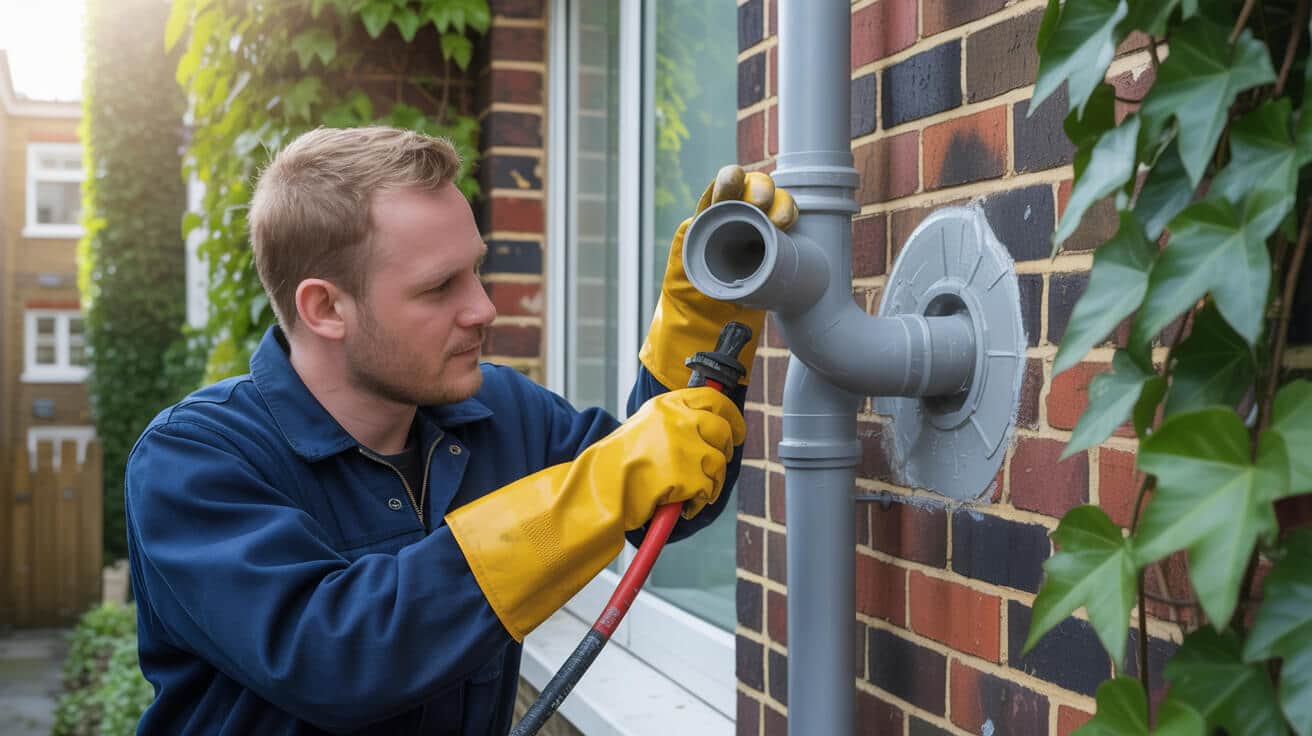
Your builder’s obligations—especially in the first two years—are often the least understood and most mishandled phase of heating protection. Yet, getting this stage right sets your property up for efficient, dispute-proof comfort.
During years one and two:
- Defect periods: require the developer to fix any system faults arising from installation errors, configuration oversights, or non-compliance with British Standards or NHBC technical requirements ([NHBC Buildmark](https://www.nhbc.co.uk/homeowners/what-does-buildmark-cover/)).
- If you spot persistent cold radiators, erratic pressures, water hammer, or system noises, these often flag underlying instal mistakes—not “normal” homeowner risk.
- Builders are obliged to respond, rectify, and provide evidence of fixes, provided the system has not been altered or neglected by the owner.
The most expensive heating problems stem from missing early documentation or failing to act soon enough.
Builder Warranty Claim: Steps for Bulletproof Coverage
- Report early and clearly: Phone, write, or email the builder at the first sign of trouble. Don’t muddle the narrative with attempted repairs.
- Document everything: Log symptoms with dates, take before and after photos, and keep every job sheet.
- Secure outside diagnosis if pushback starts: Independent, certified inspections carry a lot of weight if a developer tries to dodge their duty.
- Persist, escalate, record: Builders (and their warranty agents) are less likely to stall if you maintain a paper trail and threaten ombudsman escalation.
What’s Not Covered?
- Owner-inflicted damage, accidental misuse, and faults due to missed maintenance land outside all builder obligations.
- Common exclusions: minor leaks due to loose joints post-handover, tampering by unqualified persons, or unauthorised system modifications.
Tuck away every email, quote, or fix-report. That seemingly tedious file becomes insurance against “he said, she said” stalemates that let responsibilities slip. As the years progress and protection migrates to the manufacturer or insurer, your evidence shifts from useful to absolutely critical.
Why Do Most Post-Year-Two Heating Claims Get Rejected?
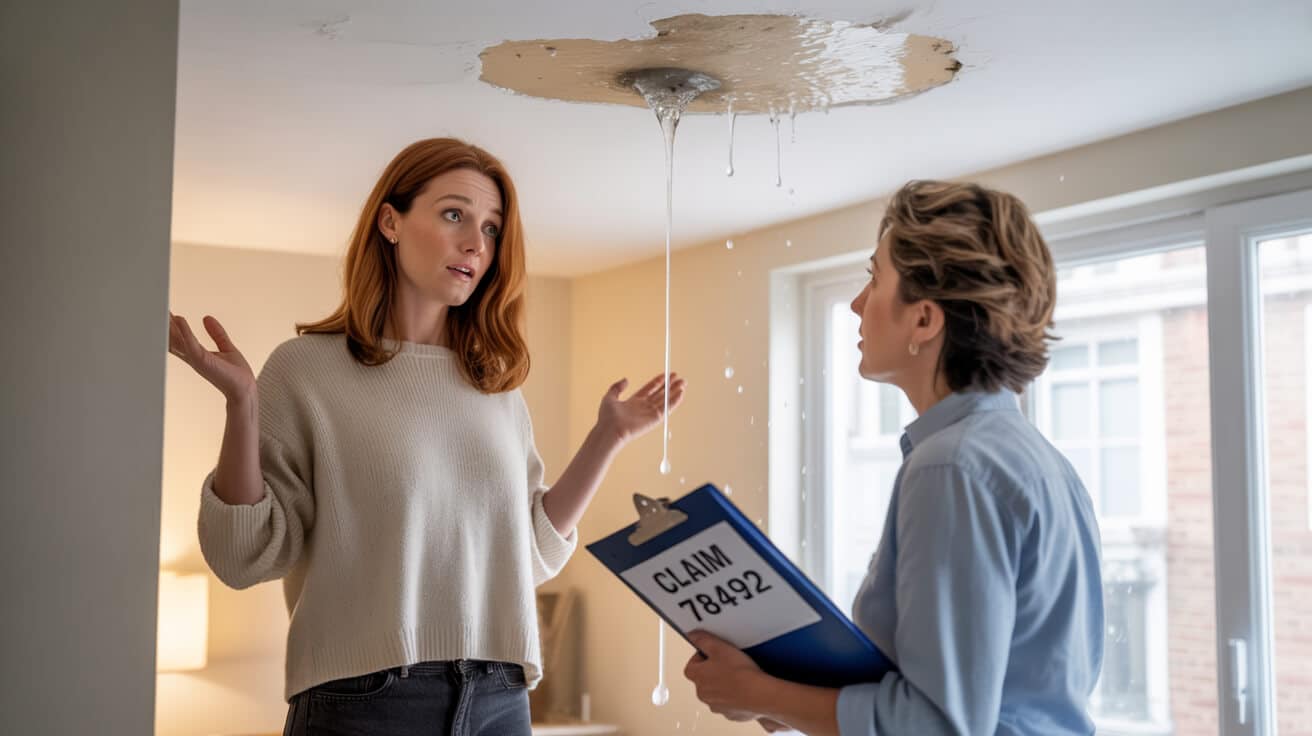
Year three and beyond—now the rules totally change. Warranty cover narrows, and most “normal” heating headaches become your problem unless their source traces back to a structural flaw, not mere component fatigue or user error.
The hard truth: fewer than three percent of heating claims made after two years are accepted, and only when there’s evidence of deep-rooted installation error ([Barratt Homes](https://www.barratthomes.co.uk/new-homes/london/how-we-can-help/customer-service/warranties-and-insurance/?utm_source=openai)).
Routine breakdowns—weak pumps, jammed valves, tired thermostats—are probably about to be refused. Landlords, property managers, and home owners need to keep receipts, logbooks, and engineer certificates on hand to even start the claim process. If you’ve missed an annual service or failed to use approved (Gas Safe, G3) personnel, most manufacturers draw a hard line: claim denied.
Typical Exclusions After Year Two
- Gradual wear and tear: Seals, gaskets, valves, and standard “consumables” are rarely warranted.
- Poor maintenance: Missed services or owner neglect reset the counter to zero on obligations.
- Limescale or system sludge: Both are preventable with proper maintenance, so claims for damage are often refused.
- User error or tampering: Attempted fixes with a YouTube guide and a set of cheap tools? You may have just eliminated every remaining strand of coverage.
A quick test: If you can’t produce a digital or stamped log for every year and can’t point to where approved engineers signed off, your system’s safety net has likely vanished.
What Should You Expect (and Not Expect) from a Manufacturer’s Heating Warranty?

manufacturer warranties walk a fine line—designed to give peace of mind, but never to absorb avoidable risk. Every detail, from how you handle paperwork to which engineer you call, matters.
Here’s what’s included:
- Faults in the manufacturing or workmanship of the unit itself (e.g., defective boiler heat exchangers, electronics, or valves).
- Coverage periods vary (often 2–5 years for boilers, 12 months on some parts; read the small print).
Here’s what’s not:
- Anything preventable—like system sludge, limescale, pressure loss due to external leaks, or faults due to incorrect fitting.
- Mishaps arising from DIY repairs or non-approved contractors; think “Gas Safe only” (and “G3” for unvented hot water).
- Cases of missing, incomplete, or unsigned service logs.
A system without a signed logbook is like a car without an MOT—hopeful, but likely illegal in a crisis.
Universal Ways to Void a Manufacturer’s Warranty
- Skipping annual service: No logbook? No help.
- Carrying out unqualified repairs: Anything that touches the inside of a boiler or unvented cylinder without authorisation is risky.
- Failing to keep records: If you lose receipts, service logs, or digital confirmations, your claim—however valid—may hit a brick wall.
- Owner-supplied parts: Fitting that “cheap online” part often voids the entire guarantee, not just your component.
A single oversight is all it takes. Keep every engineer invoice, digital confirmation, and instal record for the life of your warranty.
Why Is Scheduled Servicing the Only Way to Keep Claims Valid?
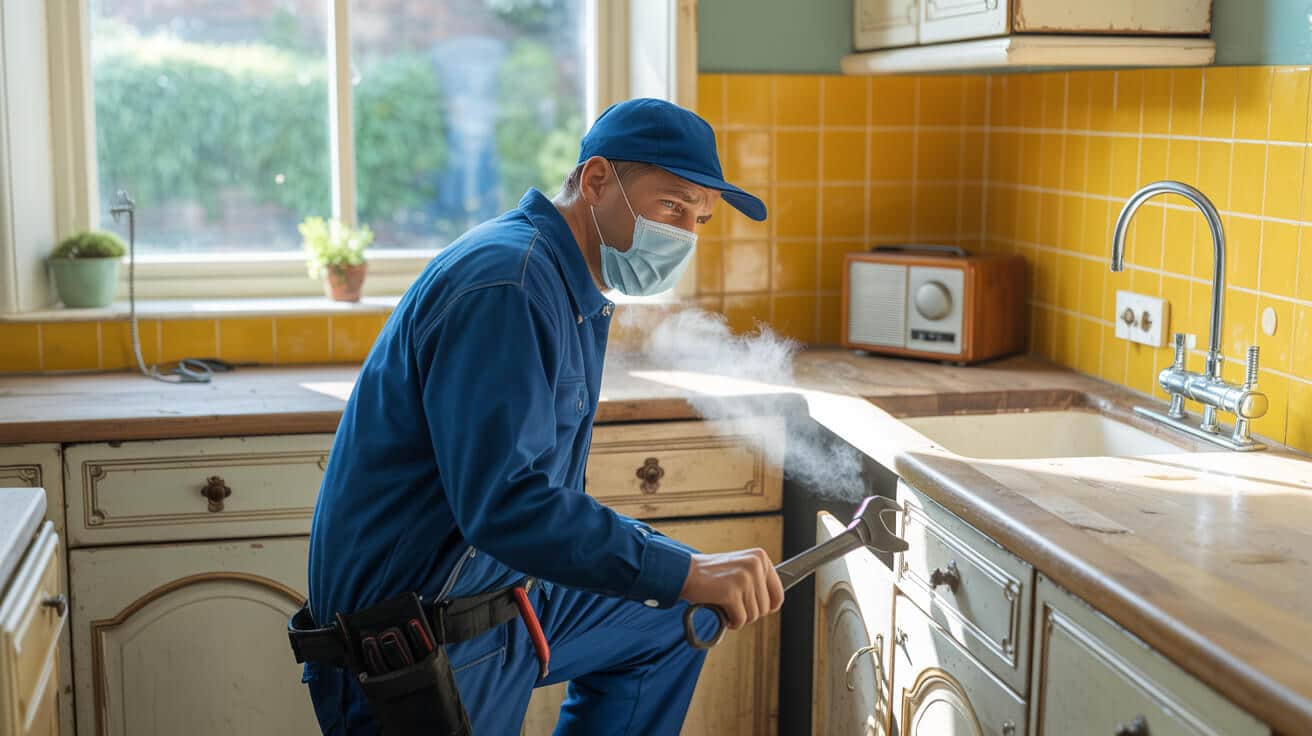
All roads—warranty, insurance, or manufacturer—lead back to maintenance. Every contract assumes you can prove your system has been cared for and checked by someone who knows their G3 from BS6700.
Essential Steps in a Valid Annual Service (and Why They Matter)
- Boiler diagnostics and repair: Engineers check combustion, pressure, and emissions.
- Full system check: expansion vessels, pressure reliefs, and control stats need professional inspection.
- Pipework and radiators: A walk-through of every loop for leaks, corrosion, and wear.
- Water quality and chemical inhibitors: Sludge or limescale reduces your system’s life span and voids most guarantees.
- Formal sign-off: A Gas Safe or G3 engineer must stamp your logbook, or digital scan, every year ([Heatfinders](https://heatfinders.co.uk/boiler-servicing/?utm_source=openai)).
No record of proper servicing, no payout. It’s as certain as a winter cold snap in January.
A service keeps more than your warranty alive. It ensures efficiency, avoids surprise breakages, and maintains value should you ever sell or let the property.
Home insurers will often require proof that annual checks have been made—and may even want to see names, dates, and precise findings.
What’s the Step-by-Step Escalation Path When Your Heating System Breaks Down?

Breakdowns never happen at a good time. The solution (and who pays) depends on the diagnosis trail and evidence chain you can provide.
Immediate Escalation Guide: Who to Contact, What to Show
- Capture the fault: List every symptom—strange noises, error codes, lack of heat or flow, leaks.
- Time matters: If you’re inside the first two years, go to the builder. If beyond, check if the issue is a major design fault (for the warranty provider).
- Gather evidence: Your service logs, digital records, and photo documentation make up your case file.
- Component failure? Contact the manufacturer with your records and proof of engineer accreditation.
- Insurance: Only a last resort, for accidental or catastrophic damage, and only if you’ve ticked every other box, first.
Get the order wrong, or lack a key document, and you risk playing responsibility ping-pong between builder, insurer, and manufacturer.
Quick-Reference Table: The Claim Route for Heating System Faults
Every scenario has a best-fit escalation path. Use this table as your North Star:
| System Age | Issue Type | Go-To Route |
|---|---|---|
| 0–2 years | Installation Fault | Builder / Developer |
| 3–10 years | Major System Defect | NHBC or warranty provider |
| Any | Single Part Failing | Manufacturer |
| Any | Accidental Damage | Home Insurer |
Keep a job diary with dates, times, and communications—it prevents disputes and ensures your claim can’t be brushed aside for “lack of evidence.”
Are Service Plans and Insurance Add-ons Ever a Wise Move?
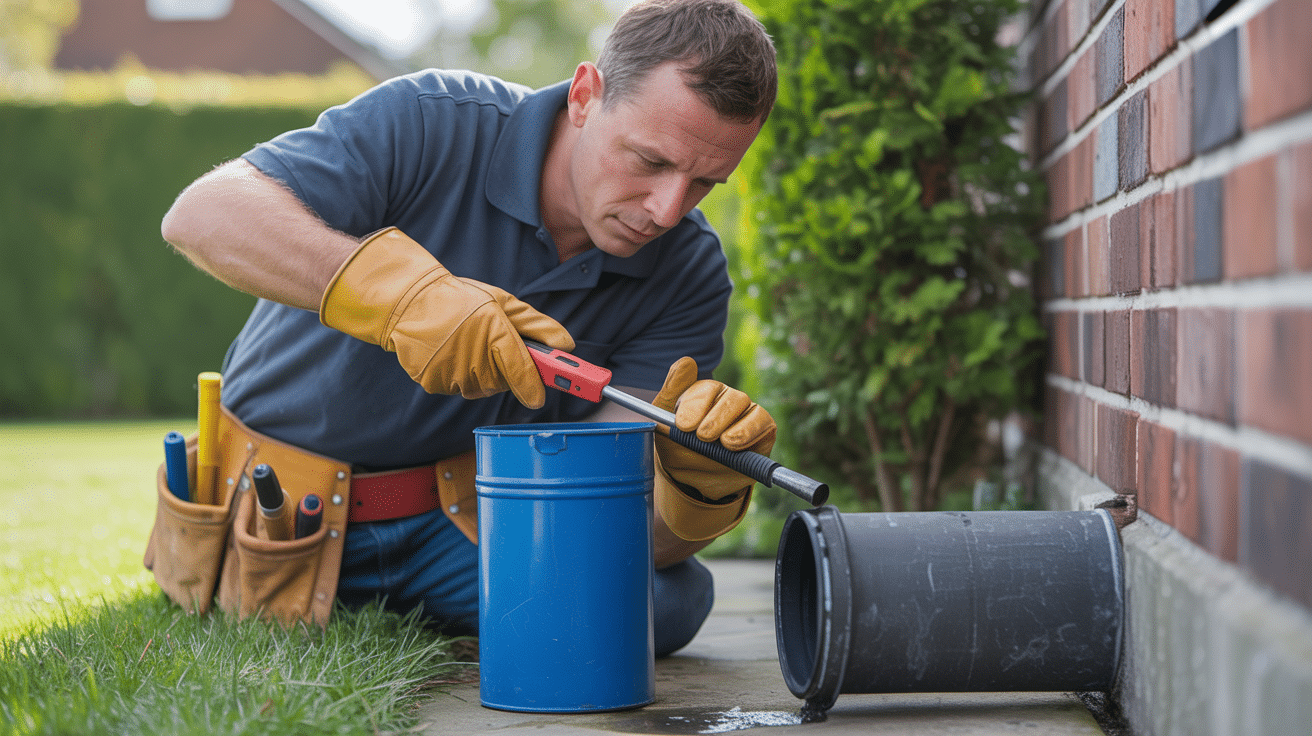
The moment you step outside the honeymoon phase of builder and manufacturer coverages, it pays to weigh risk appetites and property demands. Service plans and specialist heating insurance aren’t “set and forget,” but they are a lifeline for owners and landlords focused on cost certainty.
Comparing Support Choices: Service Plan vs Insurance
- Service Plans: Monthly subscription buys you priority booking, fixed annual service costs, certified engineers, and fast reaction to faults. The big win: every service is logged, scanned, and fit for any warranty review.
- Heating Insurance: Broader, with higher monthly fees, but includes accidental and emergency cover—a favourite among landlords, managing agents, and organisations worried about multi-tenant downtime or regulatory timelines.
- Pay-As-You-Go: The “cheapest” route early on, but risk spikes with age, and securing a trusted engineer in a crisis becomes harder ([Which? comparison](https://www.which.co.uk/reviews/boilers/article/boiler-warranties-and-service-plans-aD9On1p6szgH)).
The peace-of-mind from a decent service plan comes down to never scrambling for a reliable tradesperson during the December freeze.
Before you sign up, grill every provider on small print:
- Does coverage exclude non-standard models?
- Are multiple dwellings or flats included?
- Will they honour digital logbooks and insist on WRAS, Gas Safe, or G3 engineer sign-offs?
- What’s the callout timeline for emergencies, especially during peak season?
Never assume every policy suits every property. Older systems demand higher vigilance as faults and maintenance needs multiply.
What Can Proactive Owners and Managers Do to Prevent Claims Headaches?

Proactivity is about building resilience into both your system and your paperwork. The clients who face the least hassle after a breakdown are those who act before trouble strikes.
Six Rules for Bulletproof Heating System Protection
- File it all, in two places: Digital and paper copies of every claim, quote, job sheet, and compliance cert.
- Mark your calendar: Book all services and renewals as soon as each is ticked off.
- Engineers only with credentials: No exceptions—your system’s legal status depends on it.
- Log every job and repair: Even “small” tweaks can cause claim friction years later if not documented and signed off.
- No self-diagnosing or bodging: Leave all troubleshooting and fixes to trained personnel; even small owner interventions can nuke a warranty.
- Continually review contracts: As systems age, don’t let coverages lapse or grow stale; adapt your level of support to the evolving risk.
Evidence is leverage. Every claim, upgrade, or dispute is decided by your paper trail.
The easiest claims and fastest fixes belong to those who log from day one—avoiding the costly spiral of guesswork, blame, or missed maintenance records.
Ready for Hassle-Free Heating Support? Secure Your System with Plumbers 4U
Diligence isn’t a burden—it’s the ultimate insurance policy for your heating asset, property, and future comfort. With Plumbers 4U, every service is performed to WRAS, Gas Safe, and G3 standards, and you get evidence you can trust: full digital and hard-copy certificates, precise job records, and no margin for error when claims or disputes rear their head (Plumbers 4U credentials).
A robust service history isn’t just a path to peace of mind—it’s how you future-proof every claim and keep stress out of your home or business.
When you rely on Plumbers 4U, you benefit from:
- Plain-English, consultative diagnosis—we show you what went wrong and how it’s fixed, line by line.
- A transparent road map for who to call and when, shielding you from lost time and energy wrangling with builders, warranty firms, or insurers.
- Gold-standard aftercare: from annual service reminders to compliance certificate tracking, every property type is serviced for future resilience, not just box-ticking.
- No hard sell, ever—just honest, qualified guidance to ensure your system stays healthy and your paperwork dispute-proof.
Don’t wait for trouble to surface. Book your service or check-up today, and put your heating system’s future in hands that understand what matters: airtight evidence, compliant fixes, and support that feels like trust—because it is.
Frequently Asked Questions
Why do new build heating warranties and heating insurance protect you differently—and what does that mean for your bottom line?
A new build heating warranty exists to hold the builder or developer responsible for installation faults, non-compliant pipework, or defective parts usually in the first two years after handover, whereas heating insurance is designed to guard you against surprise breakdowns, accidental leaks, and emergencies that appear later—often after the build team has stepped away. The starkest difference is simple: warranties fix what shouldn’t have gone wrong to begin with; insurance steps up for events nobody could predict, or that happen beyond the warranty period.
Where most owners lose out is between a builder’s obligations fading away and the first real emergency hitting—the paperwork gap comes before the cold.
How are liabilities actually divided over time?
- Warranty phase (years 0–2): Protects you when a heating or plumbing issue points back to the original installation or low-grade materials. Claims run through NHBC, LABC, or developer’s direct scheme. Neglected maintenance or DIY changes can void this safety net.
- Manufacturer guarantee (often years 2–10): Kicks in for specific branded components (like the boiler) after a smooth first year. This level of cover requires annual servicing by an accredited engineer and complete logbooks—otherwise claims stall.
- Heating insurance: Acts as a lifeline for sudden breakdowns or leaks caused by age, accidents, or bad luck—after warranties have lapsed. It rarely covers errors from the original build, but ensures fast callouts and repair bills aren’t a major shock.
- Exclusions cross over: Any evidence of skipped servicing, water quality issues, amateur repairs, or cosmetic complaints will flatten both claims and insurance support. Both systems demand proof of professional care and clear documentation.
If you want true “zero-fault” protection, you need all three: warranty for builder errors, guarantee for manufacturers’ kit, insurance for the unpredictable. Every layer is valid only if you maintain clear, regular proof of care.
When does heating insurance become more than a backstop—especially with new builds?
Heating insurance becomes essential the instant your warranty shrinks to structural cover or the builder leaves minor fixes off their list. Even in new homes, you can encounter bursts, breakdowns, or bad luck well outside your first two years’ protection. While most people focus on cost, the real pain is the delay between detecting a problem and getting heat or hot water flowing again—something insurance is structurally better at resolving.
You’ll notice the value of insurance not in your bank balance, but in the speed you get your heating (and comfort) back when the unexpected strikes.
Who needs layered protection from day one?
- Landlords and block managers: Even during warranty years, you can’t wait days for a developer’s fix—insurance gets tenants warm or water restored much quicker.
- Homeowners with post-build improvements: Added zones, upgraded stats, or high-end radiators are usually not covered by builder warranties; insurance will often include these so long as they were fitted by pros.
- Remote property owners: If you’re not on site and a pipe bursts, insurance gets someone onsite quickly—warranty tickets may go unanswered for weeks.
- Letting agents and commercial leaseholders: Compliance requirements for ongoing cover (CP12, G3, etc.) mean insurance is vital for keeping business running and legal.
Table: When do you need insurance “on top”?
| Life Event/Scenario | Warranty covers? | Insurance covers? |
|---|---|---|
| Sudden leak, not instal | Not usually | Yes |
| Ageing boiler breakdown | No | Yes |
| Accidental property damage | No | Usually |
| Modifications/retrofits | No | Yes (if pro) |
| Tenant rush/failure panic | Slow response | Fast callout |
The best strategy is not waiting until the paperwork runs out—layering both means you never face a period without backup.
How can you proactively bridge the gap between warranty and insurance cover?
Bridging this gap means building a “chain of proof”—a clear sequence of actions, maintenance records, and upgrades that ensures you always have recourse when something goes wrong. Most claims fall apart not from what happened, but from a missing receipt, late registration, or single missed service.
What does a seamless protection workflow look like?
- Book every annual service early and store its log in both print and digital forms.: Missing even a single check often chops months or years from your effective cover.
- Register your boiler and main system components within days of instal.: Some manufacturers void warranties unless claims are filed inside the first 30 days.
- Use accredited pros only: Gas Safe, WaterSafe, or G3 for unvented—amateur jobs collapse all protections and can even lead to legal risk for landlords.
- Refresh your insurance plan every year: See if new cover options, emergency add-ons, or bundled repairs with trusted firms (like Plumbers 4U) are worth adopting. Insurers frequently update policies or request new compliance measures for your property type.
- Organise a “paperwork audit” after major works or before winter—especially if you’re responsible for tenants.:
In the real world, a single missing service record has denied more claims than all technical faults combined.
Year-round workflow checklist
| Step | Why do it? | When? |
|---|---|---|
| Annual Gas Safe/G3 service | Upholds all repair rights | Pre-winter |
| Boiler/system registration | Activates guarantees/critical cover | At instal |
| Insurance renewal and review | Captures new risks/price changes | At renewal |
| Digital document backup | Fastest proof on urgent claim | Ongoing |
| Engineer vetting and re-check | Prevents unqualified work/claim denial | Every booking |
“Protection” isn’t just the policy—it’s a living, breathing log of every time you cared for the system.
Which exclusions in heating cover trip up even careful property owners?
Both heating warranties and insurance are riddled with “tripwires” that even organised owners overlook—most only become obvious when a claim gets binned instantly. The most common pitfalls lurk in the detail: servicing, documentation, and what’s considered “normal wear.”
- Failure to maintain: If you skip your boiler’s annual service, it’s game over for both policy types—no documentation means no payout.
- DIY disasters: Unqualified work is the #1 reason claims are void, no matter how small the fix.
- Old age and wear: Most policies draw a sharp line between “unexpected failure” (which is insurable) and age-related decline (which isn’t).
- Water damage from preventable causes: Limescale, sludge, or poor water chemistry is usually cited as “owner responsibility,” so fail to flush or treat, and you’ll pay repairs yourself.
- Cosmetic or non-operational issues: Radiator paint loss, cracked tiles, or system noise with no proven fault aren’t covered.
- Damage caused by subsequent building works: If a kitchen refit or new extension damages pipes, the instal warranties usually won’t help—you’ll need either specialist insurance or explicit add-on cover for building damage.
The biggest shock isn’t what’s in the policy—it’s what’s deliberately left out.
Table: Typical Exclusions at a Glance
| Exclusion Type | Heating Warranty | Heating Insurance |
|---|---|---|
| Skipped service | Always out | Nearly always |
| Non-accredited repair | Yes | Yes |
| Wear/age failure | Yes | Sometimes (post excess) |
| Water quality neglect | Yes | Yes |
| Cosmetic issue | Yes | Yes |
| Building work damage | Not usually | Sometimes |
| Unreported faults | Yes | Yes |
When in doubt, ask for written clarification—and log every service call or change to stop exclusions catching you off guard at the worst possible moment.
How do claims actually get resolved—step-by-step—for builder warranties, product guarantees, or insurance?
Each type of cover follows a rigid approval flow, and the channel you use changes both speed and outcome. Proving you’ve cared for, and not tampered with, your system is the decisive factor. The key: act fast, assemble evidence, and follow the specific rules of the policy.
What does a successful claim journey look like?
- Builder’s warranty (NHBC/LABC): File a detailed claim (with timestamped photos, service logs, and clear description) before the warranty runs out. If it’s a build error, the developer or their scheme arranges a repair at no cost. If denied, escalate via ombudsman or industry body.
- Manufacturer’s guarantee: Contact support, armed with serial numbers and proof of accredited service. Expect requirements for digital logs and even remote or video inspection. Only faults in original kit/components are included.
- Heating insurance: Call the policy’s helpline, supply incident photos and evidence of maintenance. A pre-approved engineer is dispatched, or you’re briefed on claim approval/dispute process (for large events like floods, an adjuster will follow up).
In dozens of resolved claims, the paperwork and photos clinched the outcome, not who argued loudest on the phone.
Claims success table
| Cover Type | Primary Proof Needed | Typical Timescale |
|---|---|---|
| Builder’s warranty | Photos, logs, compliance record | 1–4 weeks |
| Manufacturer’s | Serial number, engineer logs | 2–8 days |
| Insurance | Photos, logs, incident details | 1–3 days (emergency) |
Every path relies on fast, digital-ready documentation; hand-scribbled paper logs or vague service histories risk outright rejection.
Which daily actions keep your heating protected, and when is it time to call in the professionals?
Securing your heating investment depends more on little routines than any policy—records, reminders, and basic vigilance. But there are clear moments when you should always get a professional involved.
What habits make all the difference?
- Log every job: Digital photos, engineer reports, and receipts are a stronger defence than any policy fine print—three taps on your phone is all it takes.
- Set calendar reminders for services: Hitting every annual date (and keeping evidence) keeps every guarantee live.
- Spot issues early, then act fast: Odd sounds, drop in hot water, or radiators taking longer to heat? Book a check before things escalate.
- Keep up with all compliance checks (Gas Safe/CP12, G3, etc.): For landlords in particular, these are non-negotiable. For homeowners, they’re your warranty’s lifeline.
- Never DIY repairs: Even minor “fixes” by the wrong person instantly break your protective chain.
Most heating failures cost the most when action is delayed—file early, log everything, and never gamble with compliance.
When to work with a professional
- Any time a repair could affect your warranty or insurance rights.
- Before or after property upgrades or tenancy changes—better to affirm coverage upfront than to fix paperwork after the fact.
- When paperwork gets ambiguous, or you suspect you’ve missed a process step.
- Ahead of winter to preempt callout rush or price spikes.
Plumbers 4U offers not just fixes but ongoing documentation and compliance support—making sure your system’s service record and cover never fall behind your real-world needs.
True resilience in home or commercial heating comes from blending airtight cover, real-world proof, and a trusted team—don’t settle for half a shield.
To keep your property warm, compliant, and cost-secure, trust Plumbers 4U for annual servicing, compliance documentation, and responsive insurance support that works as hard as your heating does.


